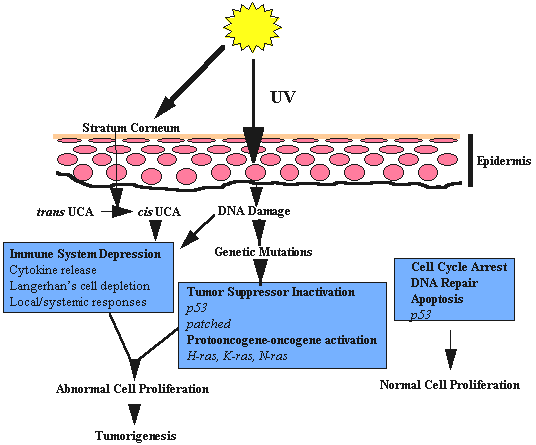
The change of position, state, or form; the spread of a disease-producing agency (as cancer cells) from the initial or primary site of disease to another part of the body; also, the process by which such spreading occurs.
Metastasis
[muh-tas-tuh-sis]
The Science of Metastatic Melanoma
Melanoma, the most serious type of skin cancer, develops in the cells (melanocytes) that produce melanin — the pigment that gives your skin its color.
Melanoma
[mel-uh-noh-muh]

Like any cancer, Melanoma begins with a mutation in the genes, more specifically cancer related gene called an "oncogene", and in this case, typically a gene called "B-raf gene". As stated previously, when there is a mutation in this gene, it produces abnormal proteins, damaging the flow of the cell cycle, creating uncontrollable cell growth.

Melanoma occurs when skin cells that make the pigment (coloring) of your skin called melanin grow out of control and form a tumor.

It may begin in normal skin or in pigmented skin, such as a mole. Melanoma can also begin in other pigmented parts of the body, like the iris of the eye or the small intestine, but that’s rare.

Metastatic melanoma is the least common skin cancer. It’s also the most deadly because it spreads (metastasizes) quickly and easily to other parts of the body.

In most cases, melanoma is caused by exposure to ultraviolet (UV) radiation from the sun or tanning beds. It damages the DNA of your skin cells and starts to grow out of control.